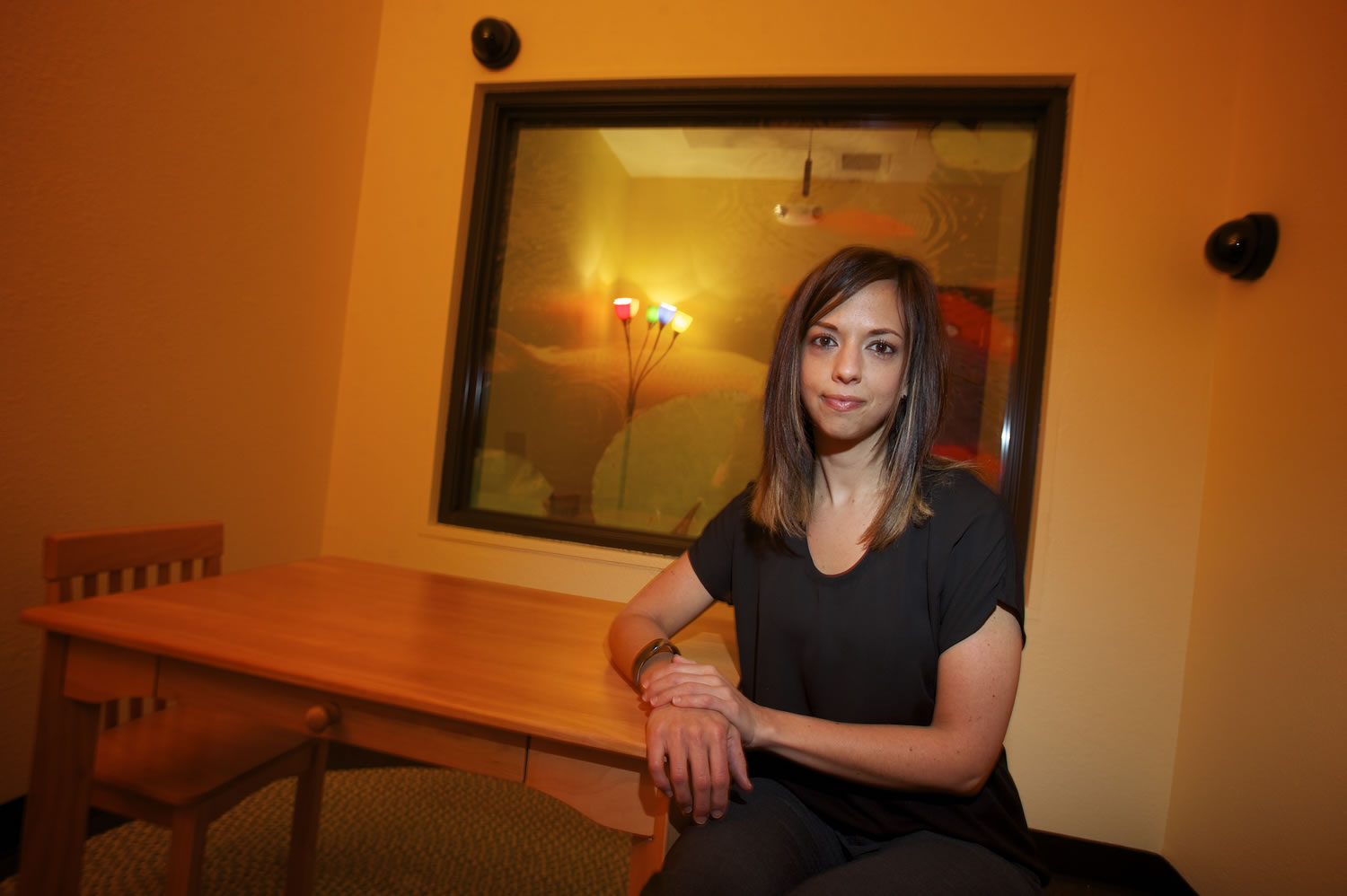Founded in 1990, the agency was the first of its kind in Washington and one of the first in the country.
During 2012, the agency received 3,320 referrals of suspected felony-level child abuse, investigated 413 cases and convicted 168 perpetrators which resulted in more than 400 years of confinement.
Between 2007 and 2012, the recession caused the Children’s Justice Center to suffer $371,318 in budget cuts — nearly a quarter of its biannual budget, which comes from city and county funds.
In response to the agency’s need, various local businesses, nonprofits and individuals have come forward in a big way to sustain the program — during the same five-year period, public donations have increased by 200 percent.
Founded in 1990, the agency was the first of its kind in Washington and one of the first in the country.
During 2012, the agency received 3,320 referrals of suspected felony-level child abuse, investigated 413 cases and convicted 168 perpetrators which resulted in more than 400 years of confinement.
“People would ask, ‘What else do you need?’ And they’d respond,” said Mary Blanchette, the center’s executive director. “They’re not only filling the gaps but improving what we do.”
The teenage boy avoided eye contact. He took long pauses, sometimes telling Amanda Kauffman that he just needed a minute.
But by the end of the forensic interview, where Kauffman asked him questions about allegedly being sexually abused, the boy said to her, “It was a lot easier to talk to you than I thought it would be.”
“That, to me, is a success,” she said.
Kauffman, 33, knows her job is a difficult one. As a member of the Arthur D. Curtis Children’s Justice Center multidisciplinary team, she is tasked with interviewing children who are alleged to have been the victim of felony-level child abuse — which includes both physical and sexual abuse.
Knowing that this ordeal may be the hardest thing a child may ever have to go through, Kauffman and the justice center staff have worked hard to make the process as easy as possible.
And with a rising level of reported abuse in Clark County, their work is more important than ever.
Hearing our children
As they arrive at the center’s downtown Vancouver location, children are led past a tree painted on the wall of the hallway. Taped to the tree are dozens of small paper cut-outs of acorns, squirrels and birds colored by “graduates” of the center. The colorful artwork is meant to help children see that they’re not alone, that so many others have been in their shoes before.
When ushering in small children, Kauffman sits with them at a wooden table and chairs that stand about two feet high. If it seems more appropriate, Kauffman will instead lead the children to another interview room where they can settle themselves on a couch. Sometimes, a black Labrador retriever mix named Tabitha will sit in on the meeting. The four-legged team member has the ability to calm nervous jitters with one glance from her big, brown eyes.
Between 2007 and 2012, the recession caused the Children's Justice Center to suffer $371,318 in budget cuts -- nearly a quarter of its biannual budget, which comes from city and county funds.
In response to the agency's need, various local businesses, nonprofits and individuals have come forward in a big way to sustain the program -- during the same five-year period, public donations have increased by 200 percent.
"People would ask, 'What else do you need?' And they'd respond," said Mary Blanchette, the center's executive director. "They're not only filling the gaps but improving what we do."
Once inside the colorfully painted walls of the agency’s interview rooms, Kauffman works to build rapport and make the child feel comfortable.
“It’s hard to be the person in that room, but it’s also a great responsibility to be that person in that room,” Kauffman said. “Somebody needs to create a space for a child to tell in their own words what did or didn’t happen.”
With a master’s degree in social work and having received training at the National Children’s Advocacy Center, Kauffman is skilled in asking questions that are neither leading nor suggestive. She has interviewed children as young as 2 years old and young adults with developmental delays who are as old as 21.
And while she says the individual stories of abuse can be difficult to hear — especially when some are tales of abuse that went years unnoticed — what Kauffman says is the most difficult part of her job is when she takes a step back.
“Just the magnitude of how big the problem is … the number of kids that come through our center,” she said. “I talk to so many kids. It’s a lot to bear witness to.”
In 2012, 413 cases of felony-level child abuse were investigated by the Children’s Justice Center. As a result, 168 perpetrators were convicted and together the offenders accumulated sentences of more than 400 years.
And the center is bracing itself for those numbers to rise with the increase in reported child abuse. When Executive Director Mary Blanchette started in 2007, the agency received 1,512 referrals for possible child abuse. By 2012, that number more than doubled to 3,320.
“We have seen more reports of possible felony level child abuse cases in the past few years than we ever have in the history of the center,” she said.
A team approach
Kauffman is a part of a large team that works to put the pieces back into place in the wake of child abuse through investigation, prosecution, medical and mental health evaluations and treatment for the victim and family.
The process starts with a referral, which can come to the center through a many avenues but all get funneled through law enforcement.
Vancouver Police Sgt. Barb Kipp, who oversees the center’s investigation arm, receives between 250 and 300 referrals a month and determines which ones fit the criteria for the center. The agency only investigates allegations of felony-level crimes, which can be one or more of about 25 offenses.
Kipp then assigns the case to one of six detectives, three from Vancouver Police Department and three from the Clark County Sheriff’s Office, who work to piece together what occurred.
Kipp first worked as a detective for the center when she was hired in 1999, when the agency was called the Child Abuse Intervention Center. When she was rotated out of her assignment at the center, she didn’t waste time to get promoted to sergeant and request to come back, this time to lead child-abuse investigations.
Although some officers see the job as trying, Kipp says she sees the work as “one of the most important jobs a police officer can do.”
Investigating these crimes is difficult, she adds, because a small percentage of the cases have evidence. Police talk to potential witnesses, listen to the disclosure from the victim, and look at things like diaries, journals and text messages to corroborate the story.
“Obtaining a confession is very important,” she said. “It takes special skills and experience and training to be successful at that.”
While police are investigating, Kauffman forensically interviews the child.
Kauffman’s job is to remain separate from the rest of the investigation and do a thorough and impartial fact finding. The interviews with the children are video recorded and passed along to investigators, prosecutors and defense attorneys. This makes it so that children only have to tell investigators their story once, reducing the potential for further harm. If Kauffman is unavailable, detectives are also trained in conducting forensic interviews.
Another important component to the child’s well being and to the case is the medical evaluation. Children are evaluated for suspicious injuries and undergo sexual abuse examinations at the Salmon Creek Medical Center’s child abuse assessment clinic. Doctors like Kim Copeland, an expert in child abuse and a pediatrician dedicated to the center, can identify the difference between an accidental bruise and the result of force.
Social workers with Child Protective Services work with the team to address concerns about the child’s safety or protection. After assessing the situation, they can either make a safety plan or remove the child from the home if the risk for further abuse is high.
Once the investigation is completed, Senior Deputy Prosecuting Attorney Dustin Richardson and his team of prosecutors then look at the totality of the case and determine if they can prove beyond a reasonable doubt that a crime was committed.
The complex nature of the cases is one of the reasons Richardson said he chose the work. Many components of these cases make them challenging, but there are some signs that help Richardson when making a decision about criminal charges. For example if the child is too young to know about certain things (like sexual organs), that can point to the validity of the child’s disclosure. However, if the child has a reputation for dishonesty, that fact could hurt his case if it were presented to a jury, Richardson explains.
About a third of the cases investigated result in criminal charges.
Throughout the process, children are assigned a victim advocate who helps explain their rights and offers support as they navigate the criminal justice system. Other resources such as mental health services and resources for families of alleged victims are also on hand for those who pass through the center’s doors.
All of these people are working collaboratively to ensure that children are receiving the best care.
“In a traditional system, different people are mandated to respond to child abuse,” center director Blanchette said. “If they are not working together, you’ve got that victim and non-offending family members getting bounced around the system from agency to agency.”
She said that the county’s children deserve it.
“This is a kinder and more effective way to address these kind of issues,” Blanchette said.
When staff members meet to debrief, they gather in a conference room decorated with large portrait photos of smiling children: their own sons and daughters.
“It’s to remind us that most children like ours come from loving families, but some aren’t as lucky,” she said. Looking at the beaming faces, she said “that is our goal for every child.”
Emily Gillespie: 360-735-4522; http://www.twitter.com/col_cops; emily.gillespie@columbian.com




